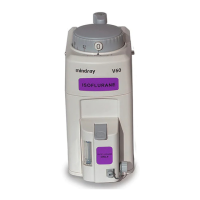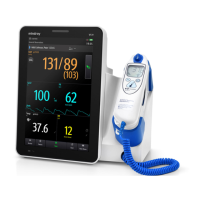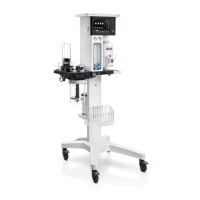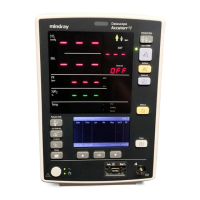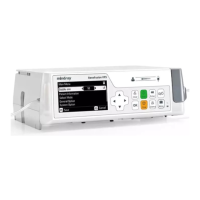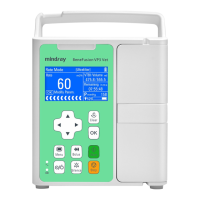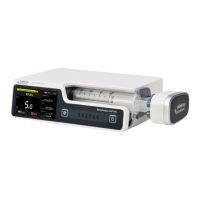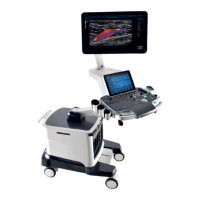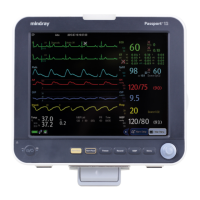Measuring NIBP Non-Invasive Blood Pressure (NIBP)
14 - 6 V Series Operating Instructions
• Do not place the NIBP cuff on a limb that is being utilized for any other medical procedure. For
example, an IV catheter or an SpO
2
sensor.
• Verify the cuff’s Index line falls between the Range lines.
• Ensure that the cuff is properly applied to avoid pressure on the limb not falling to zero
between measurements when the cuff is wrapped too tightly.
• For skin that is fragile (i.e., on pediatrics, geriatrics, etc.), consider using a longer interval
between measurements to decrease the number of cuff inflations over a period of time. In
extreme cases, a thin layer of soft roll or cotton padding may be applied to the limb in order to
cushion the skin when the cuff is inflated. This measure may affect NIBP performance and
should be used with caution.
14.3.3 Measurement Limitations
Measurements are impossible with heart rate extremes of less than 40 bpm or greater than 240 bpm,
or if the patient is on a heart-lung machine.
The measurement may be inaccurate or impossible:
• If a regular arterial pressure pulse is hard to detect
• With excessive and continuous patient movement such as shivering or convulsions
• With cardiac arrhythmias
• For pregnant or pre-eclamptic patients
• Rapid blood pressure changes
• Severe shock or hypothermia that reduces blood flow to the peripheries
• Obesity, where a thick layer of fat surrounding a limb dampens the oscillations coming from the
artery.
14.3.4 Factors Affecting Blood Pressure Measurement Accuracy
The accuracy of non-invasive blood pressure (BP) measurement has been shown to be affected by
numerous factors. Some of the more important aspects (based on published literature) to consider
while measuring BP are:
• The cuff should fit snugly, but with enough room for two fingers to be placed between the cuff
and the patient’s arm (on adults), and loosely on neonates with little or no air present within the
cuff.
• Use the Guidance Table provided to select the proper size cuff. Too small a cuff has been shown
to result in the overestimation of BP (systolic and diastolic) while too large a cuff results in the
underestimation of BP. Errors in the 10 to 40 mmHg range can occur.
Ensure that the cuff is wrapped directly over the patient’s skin. BP measurement could be 10 to 40
mmHg higher or lower than actual when the cuff is applied over clothing.

